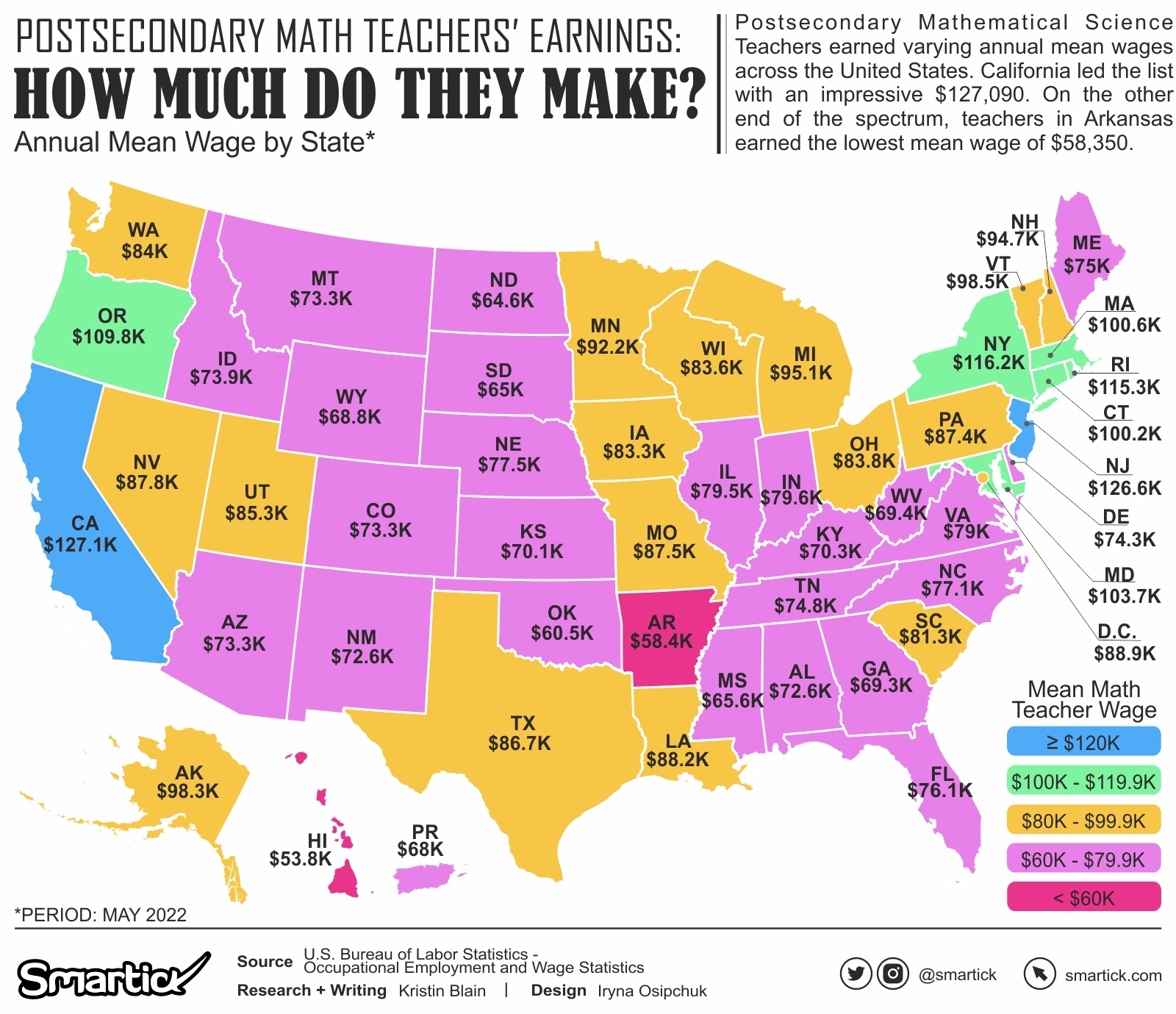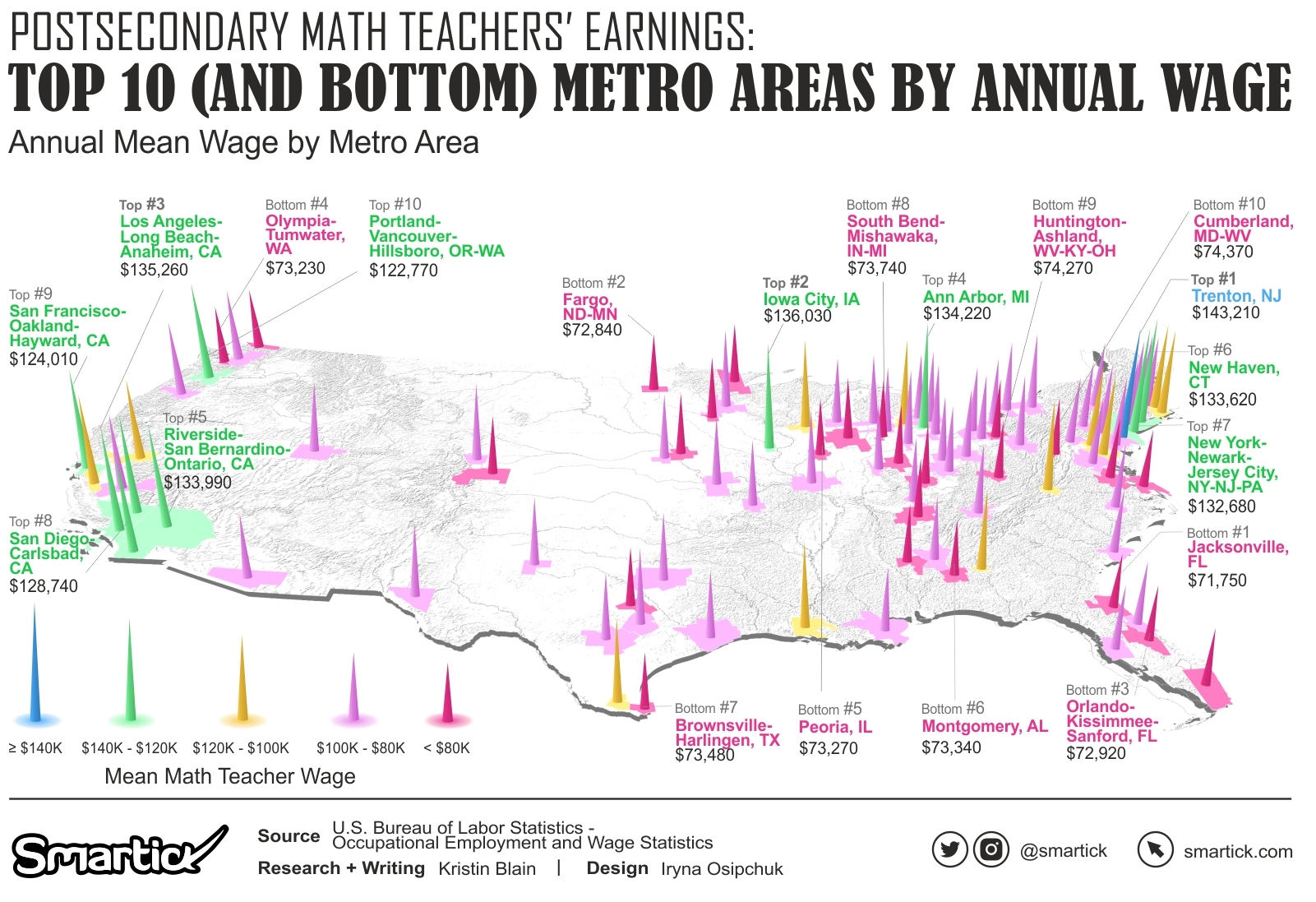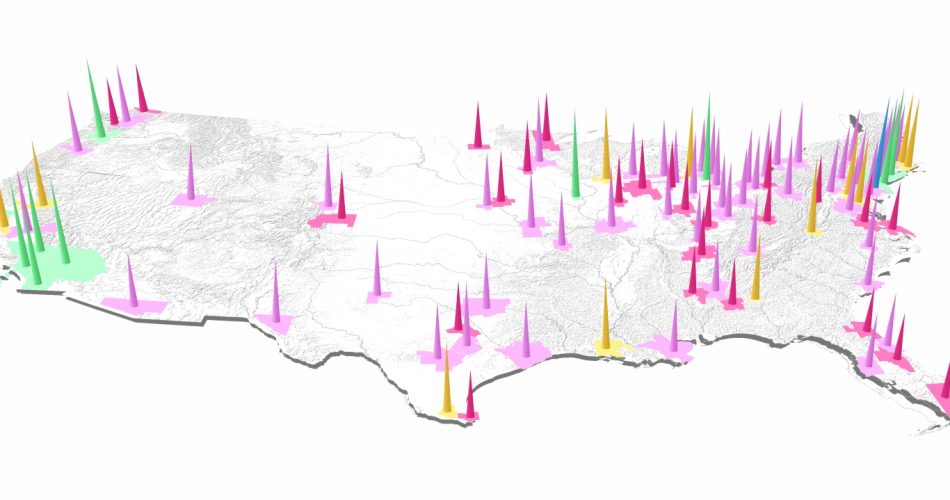
In American education, postsecondary math and science teachers stand at the core of shaping academic paths. Their salaries vary significantly across the United States, creating a diverse panorama of compensation. While some regions offer higher pay, others pose challenges with lower income scales. These differences significantly impact access to quality education and the retention of skilled educators. Delving into these disparities provides insight into the influences that mold the educational landscape.

Variations in Pay Across States
In the landscape of postsecondary education, the remuneration for math and science teachers displays notable variations across different states in the United States, as per the U.S. Bureau of Labor Statistics. States like California, New Jersey, and New York stand as high-paying regions, offering annual mean wages that exceed $110,000 for educators specializing in these subjects. The economic strength and commitment to education in these states allow for competitive compensation packages to be prioritized for their educators.
On the other end of the spectrum, states such as Hawaii and Arkansas present relatively lower salary ranges, ranging between $53.8K and $58.4K annually for postsecondary math and science teachers. Factors such as economic constraints, diverse educational budgets, and the regional cost of living contribute to the challenge of offering competitive wages in these areas.
Deeper Dive into Metropolitan Areas
Now, let’s dive into the nitty-gritty details. This year’s back-to-school spending is set to break all previous records and climb to an eye-popping $41.5 billion. Isn’t that something? It’s a massive jump from last year’s already impressive $36.9 billion and even zooms past the earlier high of $37.1 billion from 2021.

Top Paying Metropolitan Areas
- Trenton, New Jersey: Provides educators an annual mean wage surpassing $143,000, offering one of the highest compensations in the country.
- Iowa City, Iowa: Presents a mean wage exceeding $136,000, reflecting competitive pay scales for educators in the region.
- Los Angeles-Long Beach-Anaheim, California: Offers math and science teachers an annual mean wage of $135,260, aligning with the region’s higher cost of living and demand for skilled educators.
- Ann Arbor, Michigan: Provides educators an annual mean wage exceeding $134,000, ensuring competitive compensation for the workforce.
- Riverside-San Bernardino-Ontario, California: Presents a mean wage close to $134,000, reflecting the region’s economic dynamics and educational priorities.
Lowest Paying Metropolitan Areas
- Wichita, KS: Offers math and science teachers an annual mean wage of $46,560, representing one of the lower salary ranges in this sector.
- South Arkansas nonmetropolitan area: Presents an annual mean wage of $49,600, reflecting comparatively lower compensation for educators.
- Southeast Oklahoma nonmetropolitan area: Provides teachers an annual mean wage of $53,050, indicating lower remuneration in this region.
- Kansas nonmetropolitan area: Offers educators an annual mean wage of $54,090, depicting the lower end of compensation within the educational sector.
- Northwest Oklahoma nonmetropolitan area: Provides an annual mean wage of about $55,410, demonstrating lower compensation trends in this area.
The discrepancies in teacher salaries have a profound impact on the educational landscape, potentially influencing the quality and accessibility of education across different regions. Lower-paying states and metropolitan areas may face challenges in attracting and retaining highly qualified educators, which in turn could limit students’ access to quality education.
Addressing these disparities in teacher salaries within postsecondary education is vital to ensuring educational equity and quality nationwide. A collective effort to bridge these gaps and ensure fair and competitive compensation for all educators in postsecondary education is imperative.
In summary, while some states and metropolitan areas excel in offering competitive compensation for math and science teachers, others face significant challenges in providing equally attractive salaries. Bridging these gaps is crucial for maintaining a high standard of education across the country.

